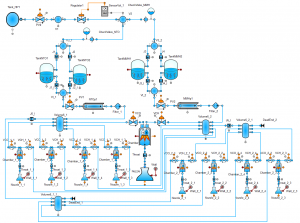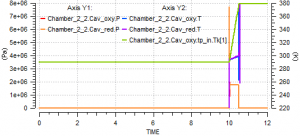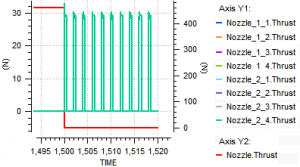José Moral, EcosimPro/PROOSIS
A new version of the FLUIDAPRO toolkit will be released shortly, including some highly anticipated new updates. Version 3.4 includes upgrades to both FLUID_PRO and FLUIDAPRO, its two main libraries.
The first one, which is used to calculate properties, includes new elements such as:
- The remodelling of the status equations. It is now possible to select user-defined fluids with simplified gas or liquid properties for use as fuel.
- Adding of fuels JP_10 and kerosene with simplified properties, and the possibility of selecting some existing fluids, such as MON1, MON3, meta- and para-hydrogen, as fuels.
- The possibility of selecting real properties for the non-condensable gases.
The FLUIDAPRO library has been updated with the incorporation of components such as the new plate heat exchanger, the improvement of the generic maps of the turbine machinery for the extrapolation of beyond design basis points, the addition of new options in valves, joints and other components and the elimination of some bugs.
The result is that new cases for application have been added, such as the satellite propulsion system normally used in space applications.

Two variants of satellite propulsion have been added: one is complex with combustion chambers and nozzles, while the other one is simplified with the ‘RCT’ component that calculates a thrust and approximate specific impulse that depends on simple correlations. The goal of the first case is to analyse the combustion (pressures and temperatures in the chambers, design of different geometries, etc), while the second one aims to study the priming and water/steam hammers, pressure drops and the responses of valves and thrusters.
For instance, the following chart lists the pressure and temperature results obtained in the cavities of the main combustion chamber with the complex model.

Finally, the chart below shows the response of the thrusters of the simplified model, which is constant for the main thruster and 0 for the rest up to time=1500. From that moment on, the main thruster is switched off and the secondary thrusters start operating.
